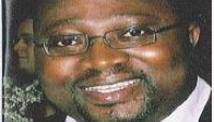MELBOURNE, Australia (AP) — Novak Djokovic held off a valiant Swiss player for a 5-hour, five-set victory Sunday night, extending his winning streak to 18 matches at the Australian Open and then ripping off his shirt to celebrate.
The big surprise: It was a fourth-round match against Stanislas Wawrinka of Switzerland, not a final against Roger Federer.
Djokovic edged the 15th-seeded Wawrinka 1-6, 7-5, 6-4, 6-7 (5), 12-10 in a momentum-swinging marathon, cashing in on his third match point to reach the quarterfinals for a 15th consecutive major tournament.
The style was reminiscent of his 5-hour, 53-minute final win here last year against Rafael Nadal.
"He deserved equally to be a winner of this match," said Djokovic, who is aiming to be the first man in the Open era to win three consecutive Australian titles. "I give him a lot of credit. He has all my respect. He was the aggressive player on the court. I was just hanging in there trying to fight."
Djokovic had beaten Wawrinka — the perennial No. 2 among Swiss tennis players to 17-time major winner Federer — in their 10 previous matches. He hadn't lost a head-to-head since 2006 and had won 11 straight sets between them.
The win "brings back the memories from 12 months ago with Rafa," he said. "We are midway through the tournament but it feels like a final to me."
Djokovic next faces Tomas Berdych, the 2010 Wimbledon finalist who advanced with a 6-3, 6-2, 7-6 (13) win over South Africa's Kevin Anderson.
Wawrinka was cramping and needed massages on both legs in the fifth set. He was so tired he decided not to challenge a decision on a call that went against him — wrongly, according to TV replays.
But he didn't think it made a difference in the end.
"In five sets, five hours, you always have some opportunity to win a set or to win the match," he said. "If you don't take it, he's going to take it.
"It's by far my best match I ever play, especially in five sets against the No. 1 player ... full house. At the end I was really, really close. For sure I'm really sad. ... But I think there is more positive than negative."
Fourth-seeded David Ferrer won 6-2, 6-1, 6-4 over No. 16 Kei Nishikori of Japan to set up an all-Spanish quarterfinal against Nicolas Almagro, who was leading 6-2, 5-1 when No. 8 Janko Tipsaveric retired from their fourth-round match.
Maria Sharapova has had almost no trouble on the women's side, beating Kirsten Flipkens of Belgium 6-1, 6-0 earlier Sunday to continue a dominant and unparalleled run in Melbourne.
The late-finishing men's match almost changed the complexion of the tournament.
Critics who questioned if anybody could challenge Djokovic, Federer and U.S. Open champion Andy Murray in the absence of Nadal at this tournament got an answer quickly.
Wawrinka stunned the top-ranked Djokovic with three service breaks in the first set and led 5-2 in the second before the 25-year-old Serb rallied by winning six consecutive games. But just as Djokovic seemed to be taking control of the match, Wawrinka launched his own comeback to win a long tiebreaker and force a fifth set.
Djokovic got to serve first in the fifth, giving him a psychological edge as long as he held his serve. In the end, Wawrinka didn't quite have the big-time experience.
Wawrinka had game point in the 22nd game but let Djokovic get on a roll. He saved his first match point with a service winner, then saved another.
At 1:40 a.m. local time, Wawrinka was whacking his head with the racket and biting the ball after giving Djokovic another match point. Moments later, he was slumped on the court.
Djokovic raised both arms, walked to the net and embraced his beaten rival, then pulled of his shirt and flexed — shades of the 2012 final.
The second-ranked Sharapova has lost only five games in four matches on the way to the quarterfinals, an Australian Open record that seems immaterial to the 25-year-old Russian.
"Well, I'm certainly happy to be playing this well but ... it only gets tougher from here," said Sharapova, who is playing her first tournament of 2013 after withdrawing from a warm-up event at Brisbane because of an injured right collarbone.
Steffi Graf conceded only eight games in her opening four matches here in 1989, when she won the second of her three straight Australian Open titles. Monica Seles matched that mark.
Sharapova has been even more dominant. She started with a pair of 6-0, 6-0 wins — the first time that has happened at a major tournament since 1985 — and then beat seven-time Grand Slam winner Venus Williams 6-1, 6-3 in the third round.
Sharapova next plays fellow Russian Ekaterina Makarova, who ousted fifth-seeded Angelique Kerber 7-5, 6-4. Sharapova beat Makarova in the quarterfinals here last year before losing the final to Victoria Azarenka.
Li Na, who reached the final here in 2011 and won the French Open later that year, saved a set point in the tiebreaker before beating Julia Goerges 7-6 (6), 6-1. She'll next play No. 4 Agnieszka Radwanska, who beat No. 13 Ana Ivanovic 6-2, 6-4 for her 13th consecutive win. Radwanska won the Auckland and Sydney titles before coming to Melbourne.



